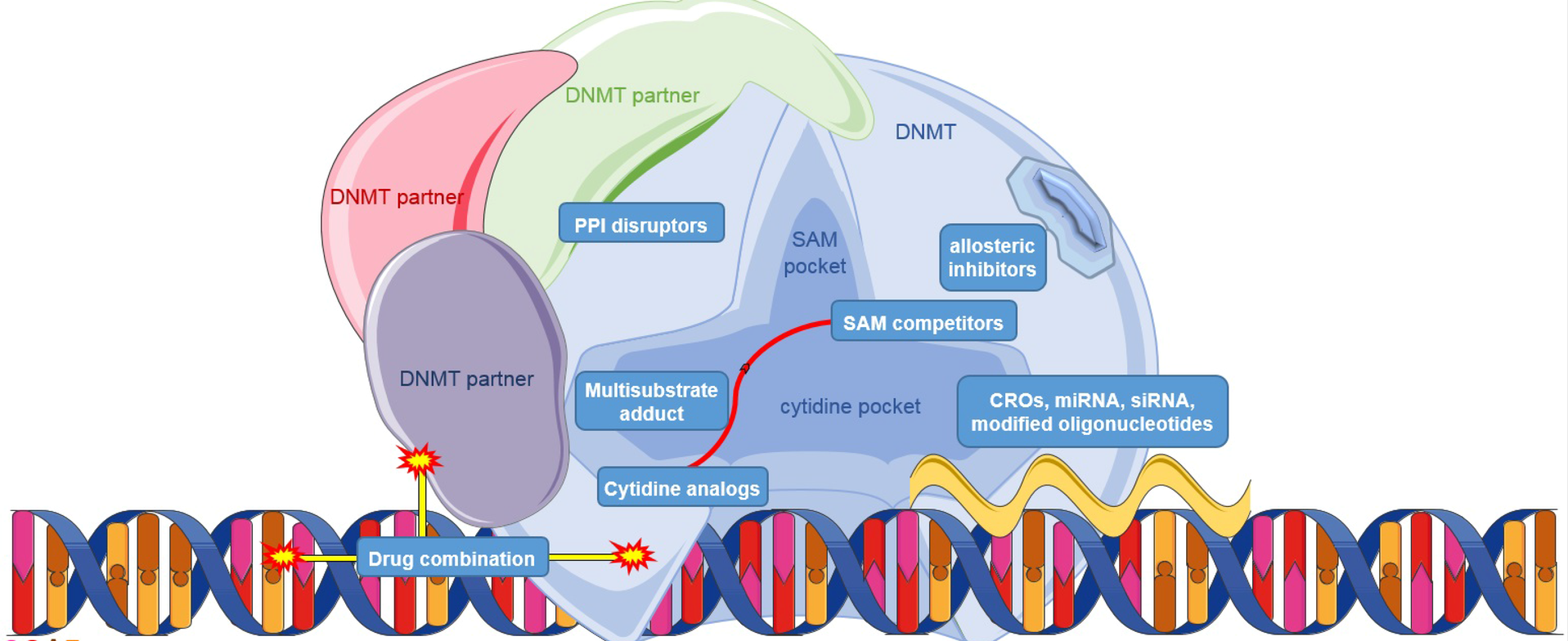A DNMT-targeted library refers to a collection of small molecules designed and synthesized with the objective of selectively inhibiting the activity of DNA methyltransferases (DNMTs). DNMTs are enzymes that catalyze the transfer of a methyl group to the carbon 5 position of cytosine residues in DNA, leading to DNA methylation. DNA methylation is an epigenetic modification that plays a critical role in gene expression regulation, genomic stability, and various cellular processes.
The dysregulation of DNMT activity and aberrant DNA methylation patterns have been implicated in numerous diseases, including cancer, neurological disorders, cardiovascular diseases, and autoimmune disorders. As such, DNMTs have emerged as attractive therapeutic targets, and developing a targeted library of small molecules that modulate their activity is a promising strategy for epigenetic drug discovery.
Designing a DNMT-targeted library involves several key considerations:
Structural insights and virtual screening:
Understanding the three-dimensional structure of DNMTs, particularly their catalytic domain and active sites, is crucial for rational drug design.
X-ray crystallography and computational modeling techniques play a significant role in providing insights into the structure and binding interactions of DNMTs with potential inhibitors.
Virtual screening methods, including pharmacophore modeling, docking studies, and molecular dynamics simulations, can be employed to identify lead compounds or fragment hits that can bind to the active site of DNMTs.
Selectivity optimization:
Developing small molecules that selectively target specific DNMT isoforms (e.g., DNMT1, DNMT3A, DNMT3B) is essential, considering their distinct roles in different biological processes.
Rational design strategies and structure-activity relationship (SAR) studies can help fine-tune the compounds’ structure to improve selectivity and reduce off-target effects on non-targeted enzymes.
High-throughput screening (HTS):
HTS can be utilized to efficiently screen large compound libraries, testing their binding affinity and specificity towards DNMTs.
Utilizing fluorescence-based assays or DNA methylation-sensitive reporter systems can facilitate the identification of novel DNMT inhibitors.
Epigenetic combination therapies:
DNMT inhibitors can be used in combination with other epigenetic modifiers or conventional therapies to achieve synergistic effects.
Screening the DNMT-targeted library with compounds targeting histone modifiers, chromatin remodeling enzymes, or transcription factors can lead to the identification of potential drug combinations with enhanced therapeutic efficacy.
Pharmacokinetic and pharmacodynamic optimization:
Optimizing drug-like properties, such as solubility, cell permeability, stability, and metabolic profiles, is crucial for the successful translation of lead compounds from the DNMT-targeted library into preclinical and clinical studies.
In vivo pharmacokinetic studies, bioavailability assessments, and toxicity evaluations are vital to understanding the compound’s behavior and safety profile.
The development of a DNMT-targeted library holds immense potential for epigenetic drug discovery, as it provides a platform for identifying small molecules that selectively modulate DNMT activity and DNA methylation patterns. This targeted approach allows for precise intervention in disease-associated epigenetic dysregulation. However, it is important to note that the journey from library design to clinically approved drugs is a complex and iterative process that necessitates robust characterization, optimization, and evaluation. Continued advancements in compound design, screening technologies, and therapeutic strategies will drive the field’s progress towards effective DNMT-targeted therapies with the potential to benefit patients across various diseases.
